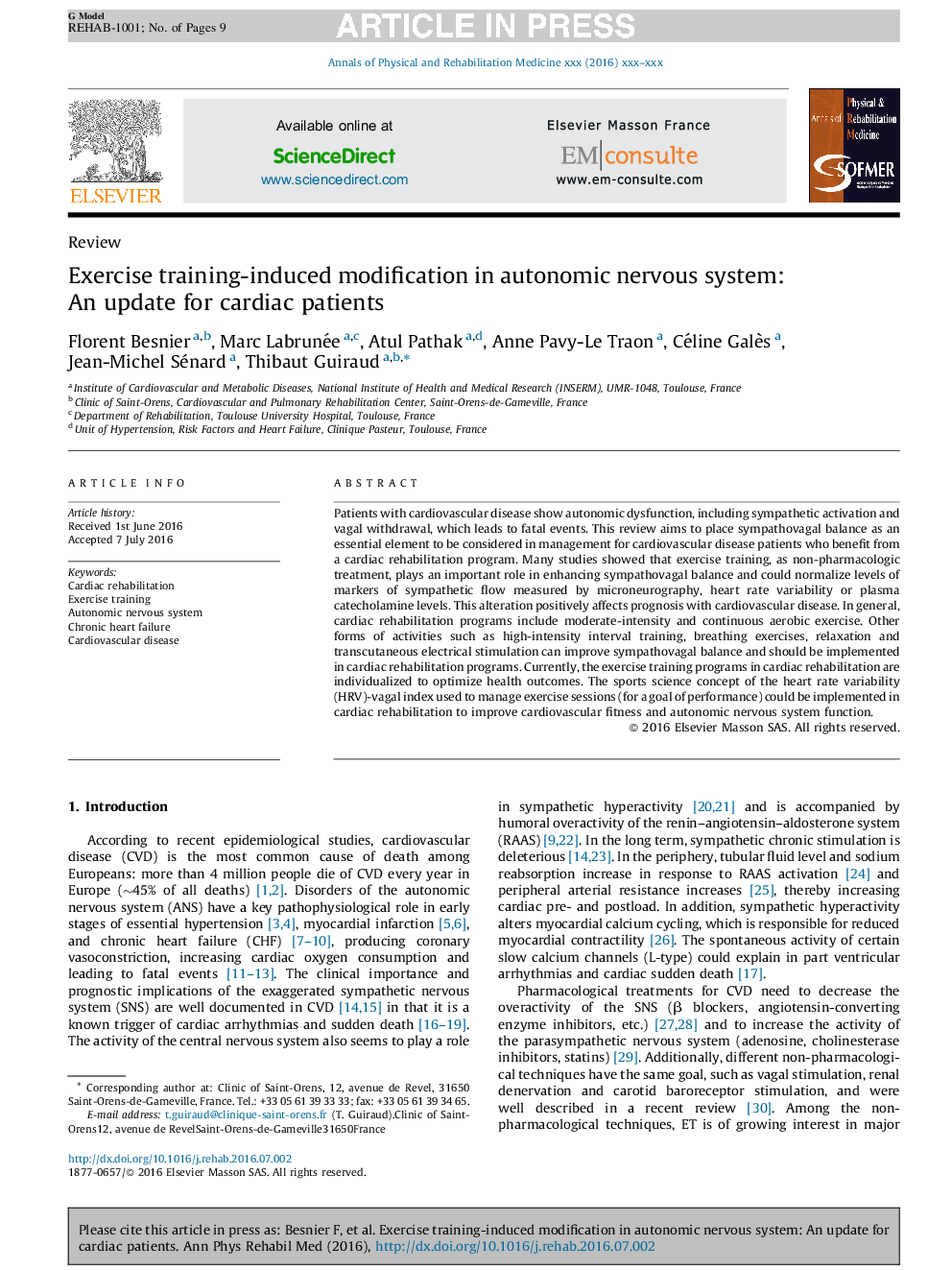| Article ID | Journal | Published Year | Pages | File Type |
|---|---|---|---|---|
| 5706159 | Annals of Physical and Rehabilitation Medicine | 2017 | 9 Pages |
Abstract
Patients with cardiovascular disease show autonomic dysfunction, including sympathetic activation and vagal withdrawal, which leads to fatal events. This review aims to place sympathovagal balance as an essential element to be considered in management for cardiovascular disease patients who benefit from a cardiac rehabilitation program. Many studies showed that exercise training, as non-pharmacologic treatment, plays an important role in enhancing sympathovagal balance and could normalize levels of markers of sympathetic flow measured by microneurography, heart rate variability or plasma catecholamine levels. This alteration positively affects prognosis with cardiovascular disease. In general, cardiac rehabilitation programs include moderate-intensity and continuous aerobic exercise. Other forms of activities such as high-intensity interval training, breathing exercises, relaxation and transcutaneous electrical stimulation can improve sympathovagal balance and should be implemented in cardiac rehabilitation programs. Currently, the exercise training programs in cardiac rehabilitation are individualized to optimize health outcomes. The sports science concept of the heart rate variability (HRV)-vagal index used to manage exercise sessions (for a goal of performance) could be implemented in cardiac rehabilitation to improve cardiovascular fitness and autonomic nervous system function.
Keywords
Related Topics
Health Sciences
Medicine and Dentistry
Orthopedics, Sports Medicine and Rehabilitation
Authors
Florent Besnier, Marc Labrunée, Atul Pathak, Anne Pavy-Le Traon, Céline Galès, Jean-Michel Sénard, Thibaut Guiraud,
